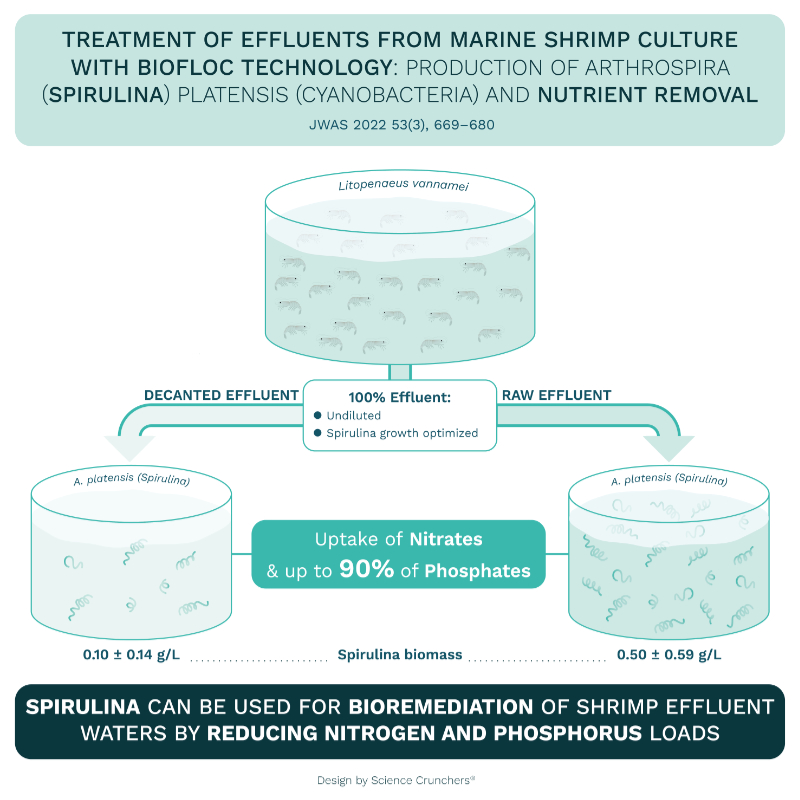JWAS Editor's Choice Awards 56(1)
The use of integrated multi-trophic aquaculture (IMTA) for multi-species culture is not new, but thi...

Production of shrimp and biofloc systems is highly productive and offers significant sustainability advantages, nonetheless nitrogenous wastes and phosphate accumulate in biofloc effluent. Holanda et al. (2022) grew the cyanobacteria Arthrospira (Spirulina) platensis in raw and decanted biofloc effluent over 12 and 20 days respectively. Results showed rapid development of cyanobacterial biomass, faster than growth in fertiliser medium and fastest in undiluted effluent. Nitrate values varied widely but showed uptake by the cyanobacteria which also was able to remove 90% of phosphate from the effluent.
The lighting required for plant growth in temperate aquaponics applications can constitute significant energy cost and must be as efficient as possible in terms of growth stimulation and energy efficiency. In this study metal halide, fluorescent, light-emitting diode (LED), and induction lighting technologies were compared on indoor production of lettuce and basil with tilapia. LED lighting outperformed all other technologies in terms of plant growth induction. The authors argue that LED produces greater red spectra and higher Red:Blue ratios than other lights which appears to be advantageous for plant growth in aquaponics.
The use of synthetic hormones to control the reproduction of tilapia destined for grow-out is either increasingly unpopular or legislated against. The use of plant-based products as alternatives to hormonal treatment is thoroughly reviewed by Abaho et al. in this article. The efficacy and administration of 20 different plants and their extracts are described. The authors identify gaps in existing knowledge ranging from extraction methods and dosages, through to effect on fish tissue quality. Recommendations for use and for future studies to refine and standardise plant and extract use are provided.
Understanding virus impacts, along with the development of antiviral treatments and vaccines require exceptional in vitro experimental research. Developing cell lines, in this case for catfish, the most important aquaculture fish in the US, is imperative to allow in vitro studies aiming at continued improvement of fish health management. Using tissue explantation and enzymatic digestion methods on catfish fin tissues, Aarattuthodi et al. established and optimised growth of a viable hybrid catfish cell line, creating a valuable resource for future in vitro studies.